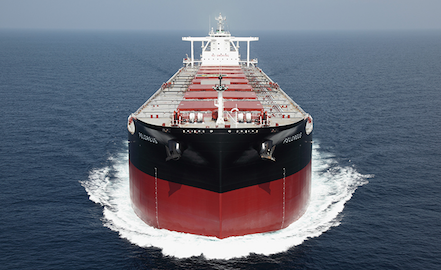Beijing backs battered real estate sector, cape rates surge

The decision by the People’s Bank of China to cut the reserve requirement ratio by 0.5 percentage points this week has driven up sentiment in the Chinese steel and iron ore markets.
The Chinese government also signalled this week that the real estate market, which accounts for around a quarter of all economic activities in the country, will be stabilised, boosting the iron ore market prices by roughly 8.66% yesterday.
By cutting the reserve requirement ratio to 8.4% from December 15, some RMB1.2trn or ($181bn) will be released, allowing banks to more easily fund projects in the battered property sector as well as in infrastructure projects.
Coming in as the highest since July last year, China’s iron ore imports rose to almost 105.0m tons last month, versus about 91.6m tons in October. Iron ore prices for 62% Fe fines rose yesterday by $8.51 per tonne to $111.3 per tonne on a CFR-basis in Qingdao, according to Fastmarkets.
The race is on, as demand from China is visibly picking up, in what Lorentzen & Stemoco believes is a fundamental turning point. Yesterday, the Baltic Exchange reported the 5TC up by $2,354 a day to $41,324 a day and noted that the Anglo-Australian mining company Rio Tinto took three capesize bulkers for voyages out of Dampier to Qingdao on its 170,000 tons iron ore +/- 10% stem. Rates were done at $14 and $ low 14s per ton.
The Norwegian brokerage reported the market is riding higher particularly on the C5 between West Australia to Qingdao, but the Atlantic is about to strengthen in a market looking stronger. Yesterday, the Baltic Exchange posted the 5TC at $38,970 a day, up by $874 day.
The capesize market is in an upturn and once again spot rates are about to revisit the psychologically important 40,000 level while panamax and supramax rates remain well supported heading into the seasonally slow Q1 period, according to a new report from Breakwave Advisors. “We anticipate the next few weeks to remain relatively strong, although naturally, there will be a correction as we approach year end,” the New York-based commodity trading advisor said.
As for China, which remains the most important region when it comes to dry bulk demand, Breakwave Advisors’ baseline scenario assumes a weak demand period till Q2 next year followed by an acceleration in activity as interest rate cuts and looser monetary conditions work their way into the economy at a time when seasonally dry bulk demand also picks up.
